This article was co-authored by Amy Chow and by wikiHow staff writer, Megaera Lorenz, PhD. Amy Chow is a Registered Dietitian and the Founder of Chow Down Nutrition, a family and child nutrition consulting service in British Columbia (BC), Canada. With over nine years of experience, Amy has a special interest in pediatric nutrition, food allergy management, and eating disorder recovery. Amy holds a Bachelor’s degree in Nutritional Sciences from McGill University. She gained her clinical experiences at residential and outpatient eating disorder treatment programs as well as for BC Children’s Hospital before starting her own business. She has been featured on Find BC Dietitians, Dietitians of Canada, Food Allergy Canada, Recovery Care Collective, Parentology, Save on Foods, National Eating Disorder Information Centre (NEDIC), and Joytv.
There are 24 references cited in this article, which can be found at the bottom of the page.
wikiHow marks an article as reader-approved once it receives enough positive feedback. In this case, 100% of readers who voted found the article helpful, earning it our reader-approved status.
This article has been viewed 1,542,464 times.
Gluten is a type of protein found in certain grains, including wheat, barley, and rye. For people with celiac disease, gluten triggers an immune system reaction that damages the intestine. But you don’t have to have celiac disease to be sensitive to gluten—it can also cause symptoms if you have a less severe condition called non-celiac gluten sensitivity.[1] It can be scary and frustrating to deal with a gluten intolerance. But once you know what’s causing your symptoms, you can take control of your diet and start on the path to healing and feeling good again!
Steps
Gluten Cheat Sheets
Immediate Symptoms
-
1Pay attention to digestive symptoms, like bloating and stomach pain.[2] Stomach issues are some of the most common symptoms of gluten sensitivity.[3] They’re also a major component of celiac disease.[4] If you feel gassy, bloated, and just plain icky after eating a meal, think back to what you ate and whether it had gluten in it.
- Some people may also experience symptoms such as diarrhea, constipation, nausea, vomiting, or heartburn.
- If you often have these kinds of symptoms, start keeping a diary to track them. Write down what you ate and how soon after your meal the symptoms began.
- Stomachaches have a lot of harmless causes, like eating too fast or overdoing the spicy foods.[5] But if you get bellyaches frequently after eating, it’s a good idea to get it checked out.
-
2Watch for tiredness after you eat foods containing gluten. It’s normal to feel a little sleepy after a big meal, while your body works to digest the food. But if you’re sensitive or intolerant to gluten, eating foods that have gluten in them may leave you feeling really fatigued or exhausted.[6] Keep track of how you feel after eating and look for patterns, like worse fatigue after eating foods with gluten.
- When you’re gluten intolerant, your immune system triggers inflammation in your intestines any time you eat gluten. This can make you feel exhausted, faint, or dizzy.[7]
- Unlike the occasional normal post-meal lethargy that may occur from time to time, you may feel completely exhausted after a meal if you have gluten intolerance.
Advertisement -
3Make note of changes in your mood after eating gluten. Feeling down a lot? Your diet might have something to do with it! If you’re sensitive or intolerant to gluten, eating foods with gluten in them may affect your mood. Watch out for feelings of depression, irritability, or anxiety after you eat foods made with wheat or other grains that contain gluten.[8]
- Irritability may be related to fatigue, or it can occur as a result of feeling run down in general, similar to how you feel when you’re sick with a cold or the flu.
- Some people with gluten intolerance report having a "foggy mind" right after they eat. In other words, they easily lose their train of thought and find concentration difficult.[9]
- The good news is that these symptoms often improve quickly once you go to a gluten-free diet.
-
4Check for headaches that develop after a meal. Headaches are a common symptom of gluten intolerance or sensitivity.[10] Next time your head starts throbbing, think about what you last ate. Did it have gluten in it?
- An occasional headache after a meal might be coincidence, so keep track of your headaches for a while and look for a pattern. Write down what you ate and how soon afterwards the headache started.
-
5Look out for numbness or pain in your joints and extremities. Gluten intolerance or sensitivity can affect more than just your stomach and intestines. You might also struggle with achy joints or tingling and numbness in your fingers and toes. If you start feeling a lot of unexplained aches, pains, or numbness, check to see if these symptoms get worse after you eat foods with gluten in them.[11]
- Aches, pains, and numbness can be symptoms of a lot of different conditions, so don’t assume gluten is the culprit. For example, numbness and pain in your hands and wrists can also be caused by carpal tunnel syndrome.[12]
Long-Term Symptoms
-
1Make note of unexplained weight loss. Gluten sensitivity or intolerance makes it harder for your body to absorb the nutrients you eat. Over time, this can cause you to lose weight, even if you haven’t changed your eating or exercise habits.[13] If you’ve noticed that you’re losing weight and you aren’t sure why, think about whether you have other symptoms of gluten intolerance, such as digestive symptoms, fatigue, or joint pain.
- Both celiac disease and non-celiac gluten sensitivity can cause unexplained weight loss.[14]
- It’s always a good idea to see your doctor about unexplained weight loss, no matter what other symptoms you might be having. They can help you figure out what’s going on and whether it’s anything to be concerned about.[15]
-
2Pay attention to prolonged changes in your mental status. Gluten intolerance can have a major impact on your mood, but it goes beyond just feeling a little irritable after a meal. People who can’t digest gluten properly are more likely to have long-term mood disorders, like depression and anxiety.[16] Keep notes about any mental health symptoms you’ve experienced and whether they seem to get worse when you eat certain things.
- Gluten intolerance can also cause symptoms like “brain fog,” or difficulty concentrating.[17]
- If you have both gluten intolerance and ADHD, eating gluten can make your ADHD symptoms worse.[18]
- Fortunately, if you have a mood disorder or mental health condition related to gluten intolerance, changing your diet can make a major, positive difference in how you feel.
-
3Keep detailed notes about any rashes that develop, including eczema. Some people with gluten intolerance may develop itchy, bumpy, burning rashes that appear in clusters on their elbows, knees, or back. These rashes may eventually scab over. If you notice one of these rashes developing, take a photo of it and send it to your healthcare provider. They may be able to tell you if it is a characteristic gluten intolerance rash.[19]
- This kind of rash is called dermatitis herpetiformis. It’s possible to get the rash without having other gluten intolerance symptoms, such as bloating or an upset stomach.
- Once you switch to a gluten-free diet, this type of rash will typically clear up. Your doctor can also prescribe medications to help get your itching under control.[20]
-
4Keep track of women’s health issues. Women and people assigned female at birth face their own special challenges with gluten intolerance. You may develop issues such as irregular menstrual cycles, premenstrual syndrome (PMS), severe menstrual cramping, miscarriage, or infertility.[21] Let your doctor know if you deal with any of these issues along with other symptoms of gluten intolerance, such as digestive problems or chronic fatigue.
- Some doctors now routinely investigate the possibility of a gluten sensitivity in couples who are unsuccessfully trying to conceive and are suffering from unexplained infertility.
Medical Diagnosis and Treatment
-
1Make an appointment with your doctor to check for a wheat allergy. Wheat allergy isn’t the same as gluten intolerance, but the symptoms can be similar.[22] Call your doctor if you’ve noticed symptoms of a wheat allergy.[23]
-
Symptoms may include:
- Itching, swelling, and irritation around or in the mouth
- Itchy rashes or hives
- Nasal congestion and itchy eyes
- Problems with the teeth (especially in small children)
- Stomach cramps, nausea, vomiting, or diarrhea
- Wheezing or difficulty breathing.
- In rare cases, a wheat allergy can cause a severe reaction called anaphylaxis. Call emergency services if you have symptoms such as swelling of the mouth or throat, chest pain or tightness, severe difficulty breathing, pale or clammy skin, and dizziness or fainting.
-
Symptoms may include:
-
2Ask your doctor if you might have celiac disease. When you have celiac disease, your immune system goes into attack mode whenever you eat gluten. Eventually, this reaction can damage the villi (tiny, hairlike structures) in your small intestine, so that your body doesn’t absorb nutrients properly. If you have symptoms of gluten intolerance, such as stomach pain, bloating, diarrhea, fatigue, brain fog, and joint pain—especially after eating foods that contain gluten—ask your doctor to test you for celiac disease. [24]
- Your doctor may recommend blood tests to look for certain antibodies and genetic markers that are associated with celiac disease.
- If the blood tests show that you might have celiac disease, your doctor will do an endoscopy, which involves inserting a tiny camera into your intestine through a tube that goes down your throat. This may sound scary, but don’t worry—you’ll be given anesthetics and sedatives to help you relax and make the procedure pain-free.[25]
-
3Speak with your doctor about gluten sensitivity if you don’t have celiac disease. If you don’t have celiac disease or a wheat allergy, then non-celiac gluten sensitivity might be the cause of your symptoms. Unfortunately, there’s no simple test to check for a gluten sensitivity.[26] However, tell your doctor about your concerns and ask if they can evaluate you based on your symptoms.
- The only sure way to identify a non-celiac gluten sensitivity is to eliminate gluten from your diet and see if your symptoms improve.
-
4Eliminate all gluten-containing foods from your diet for 2 to 6 weeks. If your doctor thinks you have a gluten sensitivity, they will likely recommend an elimination diet.[27] Work closely with your doctor or a dietitian to eliminate any foods that they think might be causing your symptoms. Pay attention to whether your symptoms disappear or improve during this time.[28]
- After a few weeks, you can start adding foods back into your diet one at a time and see if your symptoms return.
- You’ll need to avoid any foods that contain sources of gluten, such as wheat, barley, rye, triticale, and oats that have been processed with other grains.
- You’ll be able to eat foods such as fresh fruits and vegetables, beans, nuts, and seeds, eggs, lean meats, and most dairy products. You can also eat foods made with gluten-free grains, such as corn, flax, arrowroot, and buckwheat.
-
5Keep a symptom tracker journal during the elimination period. Use the journal to note any changes that occur over the course of the diet. Revisit the pages where your symptoms are listed and notice whether any of the symptoms have improved or disappeared since eliminating gluten from your diet.[29]
- Write down what you eat each day along with any symptoms, and keep track of the times of both your meals and the symptoms.
- For instance, you might note that you started day 2 with a mild headache, but that it was better by the early afternoon. Be sure to indicate whether the headache started before or after breakfast, and list exactly what you ate.
- Your doctor or nutritionist may provide or recommend a symptom diary that you can use.
-
6Reintroduce gluten into your diet after the elimination period has ended. Your doctor or nutritionist will give you instructions on how to add the foods that you eliminated back into your diet.[30] Pay attention to how you feel when you begin eating gluten again. If any symptoms return after you reintegrate gluten and you feel worse than you did when you were on the elimination diet, you may have confirmed a gluten intolerance.
- If you’re testing for multiple different types of food sensitivities—such as dairy as well as gluten—you’ll need to be extra careful and systematic about how you add foods back into your diet. Otherwise, it will be hard to tell which food might have been causing the problem.
- If you confirm your gluten intolerance after re-introducing gluten into your diet, you will have to re-eliminate gluten-containing foods from your diet so that you can keep feeling better!
-
7Eliminate gluten permanently if you have a likely gluten intolerance.[31] To correct the problems that develop as a result of a gluten intolerance, you will need to eliminate the cause and not just treat the symptoms.[32] Unfortunately, this means you’ll have to go permanently gluten-free. The good news is that there are plenty of delicious and nutritious alternatives that will help you get all the nutrients you need—plus you’ll feel a million times better!
- Replace gluten-containing foods such as wheat, barley, rye, semolina, and spelt with ingredients that do not contain gluten, such as arrowroot, peanut flour, quinoa, rice flour, and soy flour. Try these tips from the National Institute of Health to learn what you can and can't eat: https://www.niddk.nih.gov/health-information/digestive-diseases/celiac-disease/eating-diet-nutrition
- Unlike a wheat allergy, which may improve eventually over time, a general intolerance to gluten is a permanent condition in most people.
-
8Find out which foods contain gluten protein. In order to eliminate gluten from your diet, you’ll need to be aware of which foods have gluten protein in them. Gluten is particularly common in a wide variety of Western foods, including: [33] [34]
- Breads, crackers, muffins, cakes, and other baked goods
- Pasta and pizza
- Many fried and breaded foods
- Beer
- Cereal
- Some soups and processed meats
- Potato chips and French fries
- Some sauces and dairy products
- It may even be used in certain types of cosmetics (e.g., some lipsticks) and as filler in medications.
-
9Determine what foods you can eat. Learning which foods are safe for you when you have gluten intolerance or sensitivity can be a trial and error process. But by paying close attention to what you eat and how you feel, you’ll soon figure out what works for you. Keep a food diary and record every meal or snack (including beverages). If you ever experience troubling symptoms after a meal, note them in your diary.[35]
- Gluten-free sources of starch include potatoes, rice, corn, soy flax, and buckwheat (which, despite its name, is not a true wheat). Buckwheat can be used to make pancakes, porridges, baked goods, and pasta (such as Japanese soba noodles).
- Read food labels carefully to make sure that they have not been prepared with ingredients that contain gluten proteins. For example, some corn chips contain wheat flour.
- If you’re ever unsure about whether a food is safe for you, reach out to your doctor or dietitian. They can help you make good choices so you can keep on healing and feeling better!
Expert Q&A
-
QuestionHow do you find out of you have a food intolerance?
 Katie Marks-Cogan, MDDr. Katie Marks-Cogan is a board certified Pediatric & Adult Allergist at Clear Allergy based in Los Angeles, California. She is the Chief Allergist for Ready, Set, Food!, an infant dietary supplement designed to reduce the risk of childhood food allergies. She received her M.D. with honors from the University of Maryland. She then completed her residency in Internal Medicine at Northwestern University and fellowship in Allergy/Immunology at the University of Pennsylvania and CHOP.
Katie Marks-Cogan, MDDr. Katie Marks-Cogan is a board certified Pediatric & Adult Allergist at Clear Allergy based in Los Angeles, California. She is the Chief Allergist for Ready, Set, Food!, an infant dietary supplement designed to reduce the risk of childhood food allergies. She received her M.D. with honors from the University of Maryland. She then completed her residency in Internal Medicine at Northwestern University and fellowship in Allergy/Immunology at the University of Pennsylvania and CHOP.
Board Certified Pediatric & Adult Allergist If you think you have an intolerance to an ingredient or food group, stop eating it. Then, if your symptoms go away after a few days, try eating it again. If you have a negative reaction within a few hours of eating the food, you may be intolerant to it.
If you think you have an intolerance to an ingredient or food group, stop eating it. Then, if your symptoms go away after a few days, try eating it again. If you have a negative reaction within a few hours of eating the food, you may be intolerant to it. -
QuestionHow do you deal with a gluten allergy?
 Katie Marks-Cogan, MDDr. Katie Marks-Cogan is a board certified Pediatric & Adult Allergist at Clear Allergy based in Los Angeles, California. She is the Chief Allergist for Ready, Set, Food!, an infant dietary supplement designed to reduce the risk of childhood food allergies. She received her M.D. with honors from the University of Maryland. She then completed her residency in Internal Medicine at Northwestern University and fellowship in Allergy/Immunology at the University of Pennsylvania and CHOP.
Katie Marks-Cogan, MDDr. Katie Marks-Cogan is a board certified Pediatric & Adult Allergist at Clear Allergy based in Los Angeles, California. She is the Chief Allergist for Ready, Set, Food!, an infant dietary supplement designed to reduce the risk of childhood food allergies. She received her M.D. with honors from the University of Maryland. She then completed her residency in Internal Medicine at Northwestern University and fellowship in Allergy/Immunology at the University of Pennsylvania and CHOP.
Board Certified Pediatric & Adult Allergist Switch out wheat flour for almond or chickpea flour for gluten-related disorders. Almond flour is a popular choice, but you can also find recipes to make your own chickpea flour for a more authentic taste.
Switch out wheat flour for almond or chickpea flour for gluten-related disorders. Almond flour is a popular choice, but you can also find recipes to make your own chickpea flour for a more authentic taste. -
QuestionWhat grains are gluten-free?
 Amy ChowAmy Chow is a Registered Dietitian and the Founder of Chow Down Nutrition, a family and child nutrition consulting service in British Columbia (BC), Canada. With over nine years of experience, Amy has a special interest in pediatric nutrition, food allergy management, and eating disorder recovery. Amy holds a Bachelor’s degree in Nutritional Sciences from McGill University. She gained her clinical experiences at residential and outpatient eating disorder treatment programs as well as for BC Children’s Hospital before starting her own business. She has been featured on Find BC Dietitians, Dietitians of Canada, Food Allergy Canada, Recovery Care Collective, Parentology, Save on Foods, National Eating Disorder Information Centre (NEDIC), and Joytv.
Amy ChowAmy Chow is a Registered Dietitian and the Founder of Chow Down Nutrition, a family and child nutrition consulting service in British Columbia (BC), Canada. With over nine years of experience, Amy has a special interest in pediatric nutrition, food allergy management, and eating disorder recovery. Amy holds a Bachelor’s degree in Nutritional Sciences from McGill University. She gained her clinical experiences at residential and outpatient eating disorder treatment programs as well as for BC Children’s Hospital before starting her own business. She has been featured on Find BC Dietitians, Dietitians of Canada, Food Allergy Canada, Recovery Care Collective, Parentology, Save on Foods, National Eating Disorder Information Centre (NEDIC), and Joytv.
Registered Dietitian Rice, quinoa, and gluten-free oats are all great options for a gluten-free diet.
Rice, quinoa, and gluten-free oats are all great options for a gluten-free diet.
Warnings
- Never start your child on an elimination diet without consulting your pediatrician. They will want to first rule out celiac disease and a wheat allergy. If the doctor believes your child may benefit from an elimination diet, they will provide proper instructions and continued supervision throughout the process.⧼thumbs_response⧽
- Left untreated, gluten sensitivity is associated not only with reproductive disorders in females but also autoimmune disorders, osteoporosis, intestinal cancer, and liver disease.[36]⧼thumbs_response⧽
References
- ↑ https://www.ncbi.nlm.nih.gov/pmc/articles/PMC5677194/
- ↑ Amy Chow. Registered Dietitian. Expert Interview. 16 September 2020.
- ↑ https://www.karger.com/Article/Pdf/440990
- ↑ https://www.mayoclinic.org/diseases-conditions/celiac-disease/symptoms-causes/syc-20352220
- ↑ https://www.unitypoint.org/livewell/article.aspx?id=c2a97765-27a7-40f0-a650-59e7720d10ce
- ↑ https://www.beyondceliac.org/celiac-disease/non-celiac-gluten-sensitivity/symptoms/
- ↑ https://www.health.harvard.edu/digestive-health/non-celiac-gluten-sensitivity
- ↑ https://www.ncbi.nlm.nih.gov/pmc/articles/PMC6266949/
- ↑ https://celiac.org/about-celiac-disease/related-conditions/non-celiac-wheat-gluten-sensitivity/
- ↑ https://www.karger.com/Article/Pdf/440990
- ↑ https://www.beyondceliac.org/celiac-disease/non-celiac-gluten-sensitivity/symptoms/
- ↑ https://www.mayoclinic.org/diseases-conditions/carpal-tunnel-syndrome/symptoms-causes/syc-20355603
- ↑ https://www.mayoclinic.org/diseases-conditions/celiac-disease/symptoms-causes/syc-20352220
- ↑ https://www.karger.com/Article/Pdf/440990
- ↑ https://www.mayoclinic.org/symptoms/unexplained-weight-loss/basics/when-to-see-doctor/sym-20050700
- ↑ https://www.ncbi.nlm.nih.gov/pmc/articles/PMC6266949/
- ↑ https://celiac.org/about-celiac-disease/related-conditions/non-celiac-wheat-gluten-sensitivity/
- ↑ https://www.ncbi.nlm.nih.gov/pmc/articles/PMC3184556/
- ↑ https://www.mayoclinic.org/diseases-conditions/celiac-disease/symptoms-causes/syc-20352220
- ↑ https://celiac.org/about-celiac-disease/related-conditions/dermatitis-herpetiformis/
- ↑ https://www.womenshealth.gov/healthy-eating/food-allergies-and-sensitivities/celiac-disease-and-gluten-intolerance
- ↑ https://acaai.org/allergies/types/food-allergies/types-food-allergy/wheat-gluten-allergy
- ↑ https://www.mayoclinic.org/diseases-conditions/wheat-allergy/symptoms-causes/syc-20378897
- ↑ https://www.mayoclinic.org/diseases-conditions/celiac-disease/symptoms-causes/syc-20352220
- ↑ https://www.mayoclinic.org/tests-procedures/endoscopy/about/pac-20395197
- ↑ https://newsnetwork.mayoclinic.org/discussion/no-test-to-diagnose-wheat-or-gluten-sensitivity/
- ↑ https://newsnetwork.mayoclinic.org/discussion/no-test-to-diagnose-wheat-or-gluten-sensitivity/
- ↑ https://rightasrain.uwmedicine.org/body/food/what-you-should-know-trying-elimination-diet
- ↑ https://www.fammed.wisc.edu/files/webfm-uploads/documents/outreach/im/handout_elimination_diet_patient.pdf
- ↑ https://www.fammed.wisc.edu/files/webfm-uploads/documents/outreach/im/handout_elimination_diet_patient.pdf
- ↑ Amy Chow. Registered Dietitian. Expert Interview. 16 September 2020.
- ↑ https://celiac.org/gluten-free-living/gluten-free-foods/
- ↑ https://celiac.org/gluten-free-living/what-is-gluten/sources-of-gluten/
- ↑ Amy Chow. Registered Dietitian. Expert Interview. 16 September 2020.
- ↑ https://www.mayoclinic.org/healthy-lifestyle/nutrition-and-healthy-eating/in-depth/gluten-free-diet/art-20048530
- ↑ https://www.beyondceliac.org/celiac-disease/related-conditions/
About This Article
To recognize gluten intolerance, notice if you feel fatigued or irritable after eating foods containing gluten. You may also suffer from headaches, joint pain, bloating, gas, or diarrhea after eating gluten. Over time, you may experience unexpected weight fluctuations, memory lapses, or develop rashes on your elbows or knees. In order to test your sensitivity to gluten, eliminate it from your diet for 2 to 4 weeks, and keep a symptom journal to note any changes you might feel. If you suspect you have a gluten intolerance, talk to your doctor about how to confirm and treat your diagnosis. For more tips from our Medical co-author, including how to reintroduce gluten into your diet after the elimination period, keep reading!
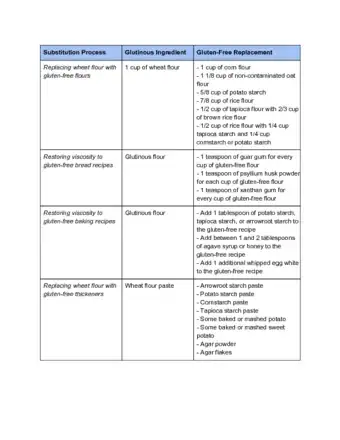
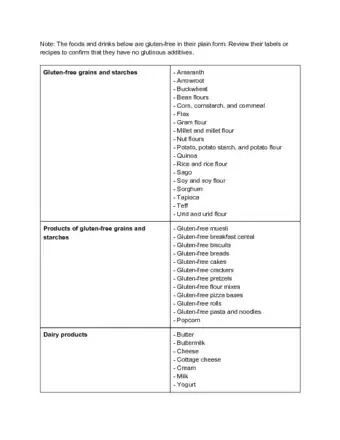
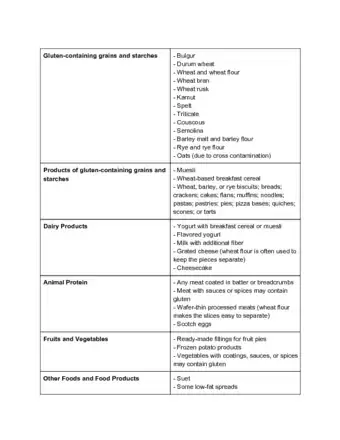
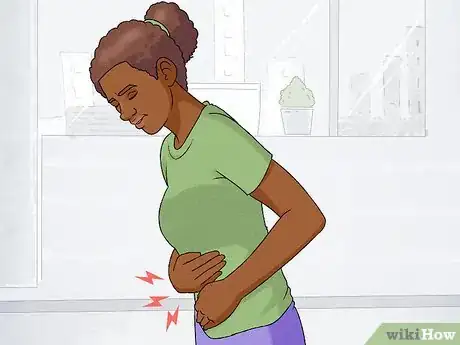

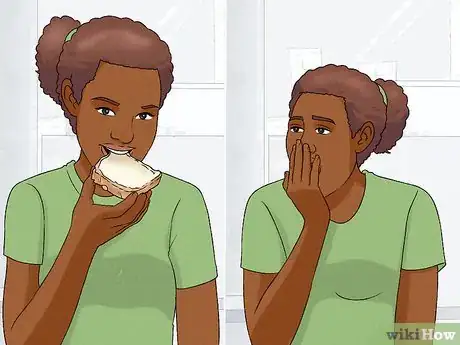
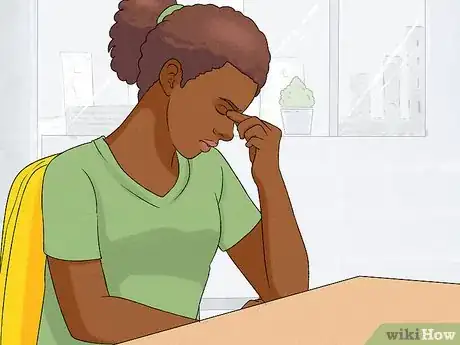
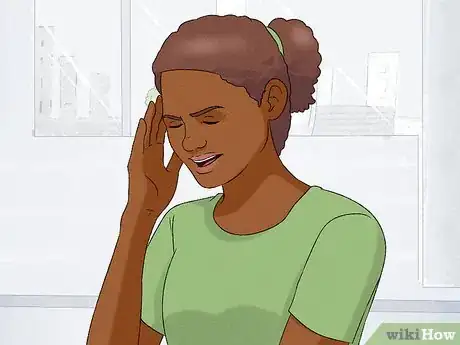
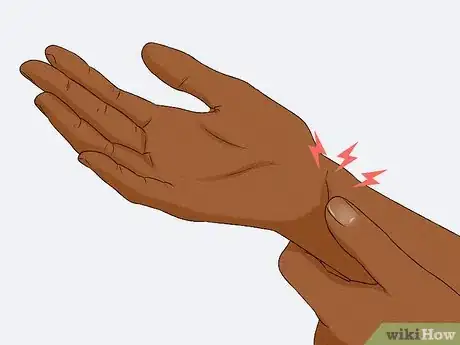
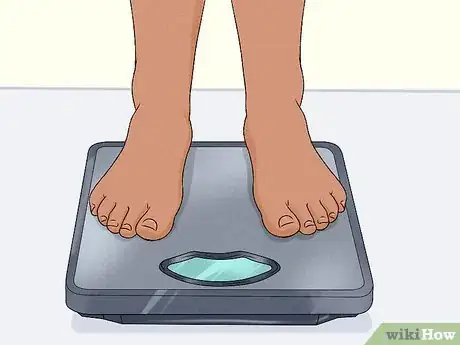
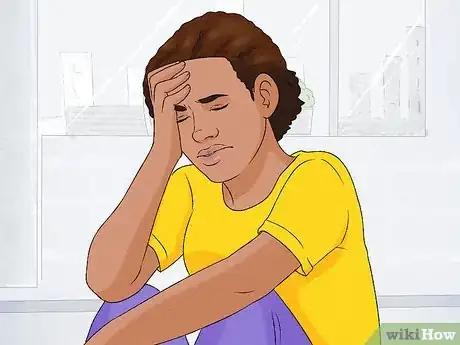
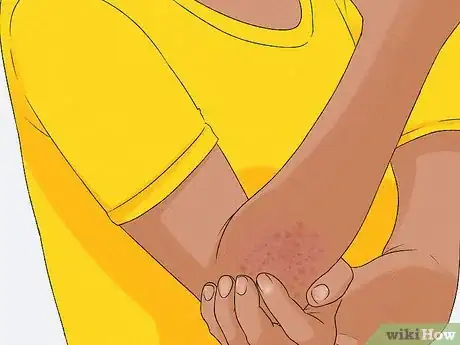
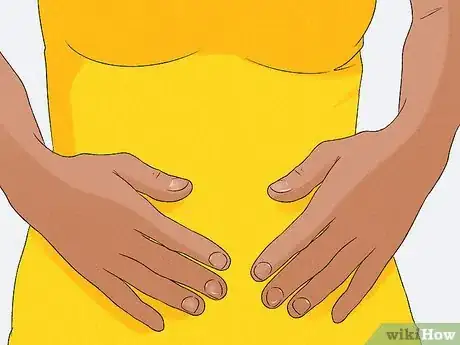
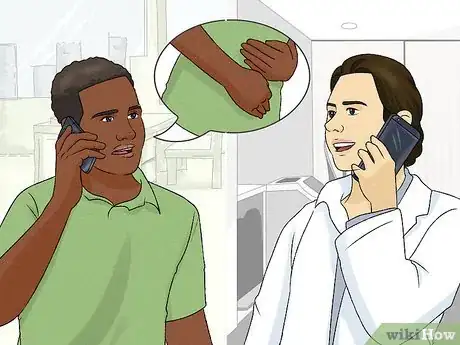
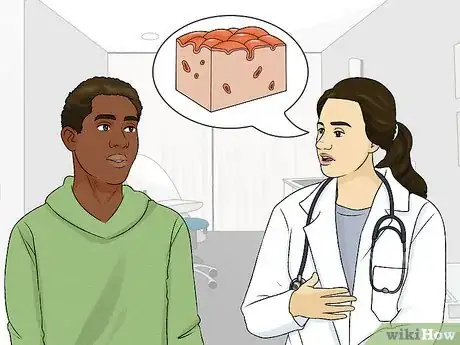
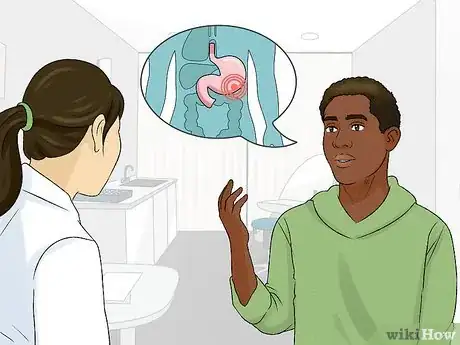
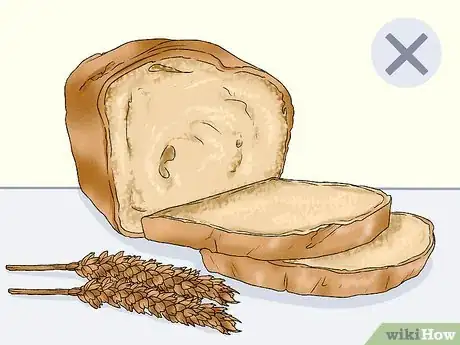

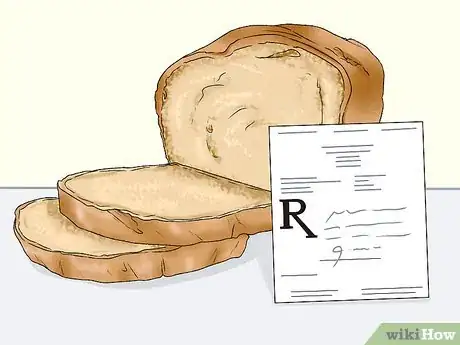
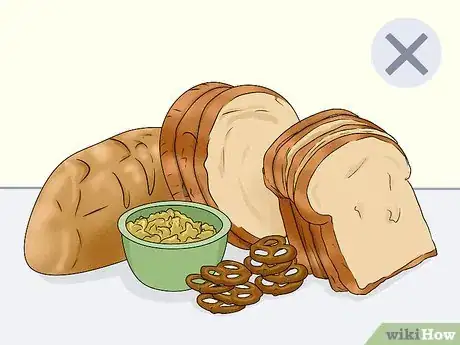
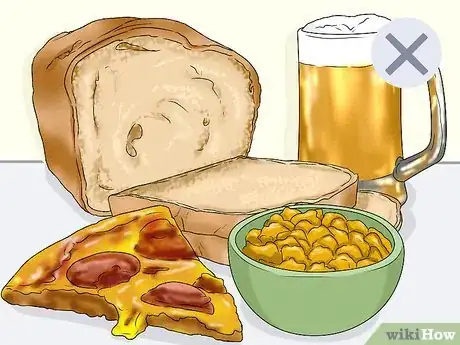
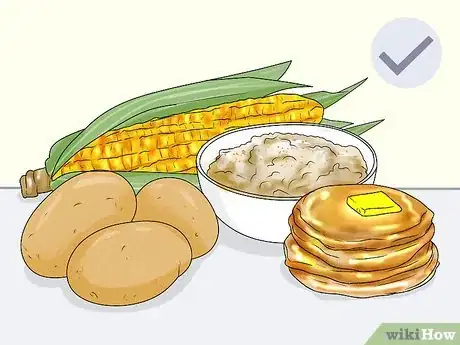
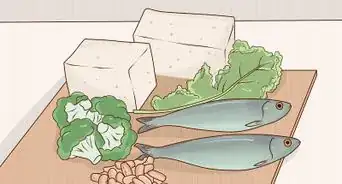
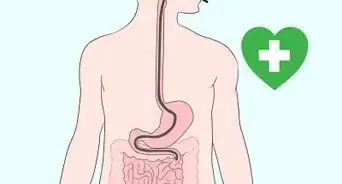
























































Medical Disclaimer
The content of this article is not intended to be a substitute for professional medical advice, examination, diagnosis, or treatment. You should always contact your doctor or other qualified healthcare professional before starting, changing, or stopping any kind of health treatment.
Read More...